
Fundamentals
The story of human existence is etched into the very fibers of our being, a profound chronicle of adaptation and resilience. When we consider the concept of Human Evolutionary Adaptations, our thoughts often drift to grand shifts in skeletal structure or changes in internal organ systems, yet the subtle, often overlooked attributes of our hair hold equally compelling tales. This foundational understanding begins with recognizing that our hair, particularly textured hair, stands as an ancient testament to ingenuity, a testament to survival in the cradle of humanity. It served far more than a mere aesthetic function for our ancestors; it was a living, breathing component of their capacity to thrive amidst environmental challenges.
The primordial purpose of hair on the human scalp, especially in the sun-drenched expanse of equatorial Africa where early humans arose, was primarily protective. This initial purpose forms the bedrock of its meaning within our ancestral heritage. Hair, in its most elemental form, acted as a natural shield, guarding the delicate scalp and the ever-developing brain against the relentless intensity of solar radiation. The morphology of hair, its very shape and density, developed in concert with the needs of a species evolving in direct, overhead sunlight for much of the day, year in and year out.
A direct correlation exists between hair’s form and its functional capacity. For those new to this wisdom, understanding this concept involves recognizing how the natural curl patterns, often observed in Black and Mixed-Race Hair, are not random occurrences. They are, in fact, an inherited legacy of remarkable biological engineering. This intrinsic structure minimized heat absorption, mitigating the physiological strain of constant sun exposure.
Our hair, especially textured hair, is an ancient shield, reflecting deep biological wisdom cultivated across generations.
This primary function sets the stage for appreciating the depth of Care Traditions that emerged around hair. Ancestral practices were not born from fleeting trends; they were steeped in an intuitive comprehension of hair’s protective qualities. The rituals of anointing the scalp, styling hair in various forms, and adorning it held practical value alongside their cultural and spiritual meanings. They reinforced hair’s role as a vital layer of defense and a conduit for well-being.
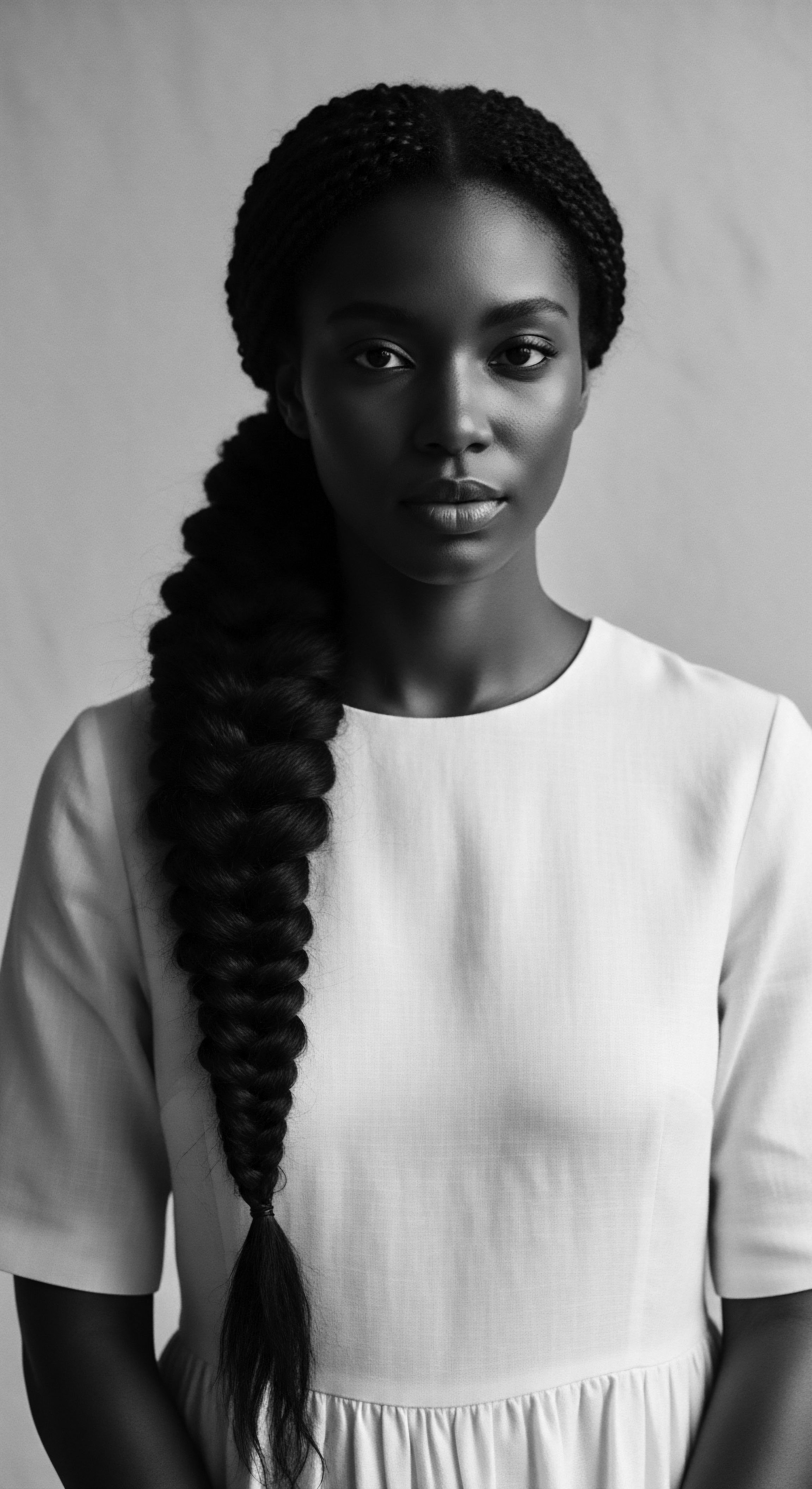
The Sun’s Ancient Dialogue with Hair
Consider the ancestral landscape of early human emergence. The sun, a life-giver and a formidable force, shaped existence. The human form, evolving to an upright posture, presented a unique challenge ❉ the scalp became the body’s most directly exposed surface to the sun’s zenith.
This direct exposure meant constant thermal load and the potential for overheating the brain, a organ with high metabolic demands and sensitivity to heat. This environmental pressure encouraged a specific evolutionary response.
Early anthropologists observed varying hair morphologies across human populations. The interpretation of these forms consistently points to an ancestral adaptation that served to cool the head and offer UV protection. The distinct forms of hair, from straight to tightly coiled, each carry a silent narrative of their origins and the environmental dialogues that sculpted them. The designation of hair forms, whether categorized as Leiotrichy (straight), Cymotrichy (wavy), or Ulotrichy (tightly curled), provides a vocabulary to discuss these inherited characteristics with precision.
- Thermoregulation ❉ Tightly coiled hair forms a dense, yet airy, canopy above the scalp, creating an insulating layer that reduces the direct transfer of solar heat to the skin.
- UV Protection ❉ The inherent density and coil of textured hair provide a natural barrier against harmful ultraviolet radiation, safeguarding the scalp.
- Water Conservation ❉ By minimizing the heat absorbed by the scalp, tightly curled hair reduces the need for the body to expend valuable water through sweating to maintain core temperature.
These fundamental adaptive qualities are not merely abstract concepts; they are the living legacy within every strand of textured hair, informing the deep heritage of its care and reverence.

Intermediate
Moving beyond the foundational insights, the exploration of Human Evolutionary Adaptations deepens into a more nuanced comprehension of how our physical attributes, especially hair, intricately align with the demands of ancient environments. This layer of understanding uncovers the complex interplay between biological necessity and the subsequent development of cultural practices that honored these inherent forms. For textured hair, this means understanding its structure not as a challenge, but as a sophisticated solution, perfected over millennia.
The distinctive helical structure of naturally coiled hair provides a unique biological mechanism for protection without excessive insulation, distinguishing it from the dense fur coats of other mammals. This peculiar parasol, as some researchers describe it, creates volume and air pockets. These air pockets are instrumental in regulating temperature by allowing for natural air circulation while simultaneously deflecting direct sunlight away from the scalp. This strategic design reduced the solar influx, offering a passive cooling system that was crucial for hominins evolving in regions of intense sun exposure.
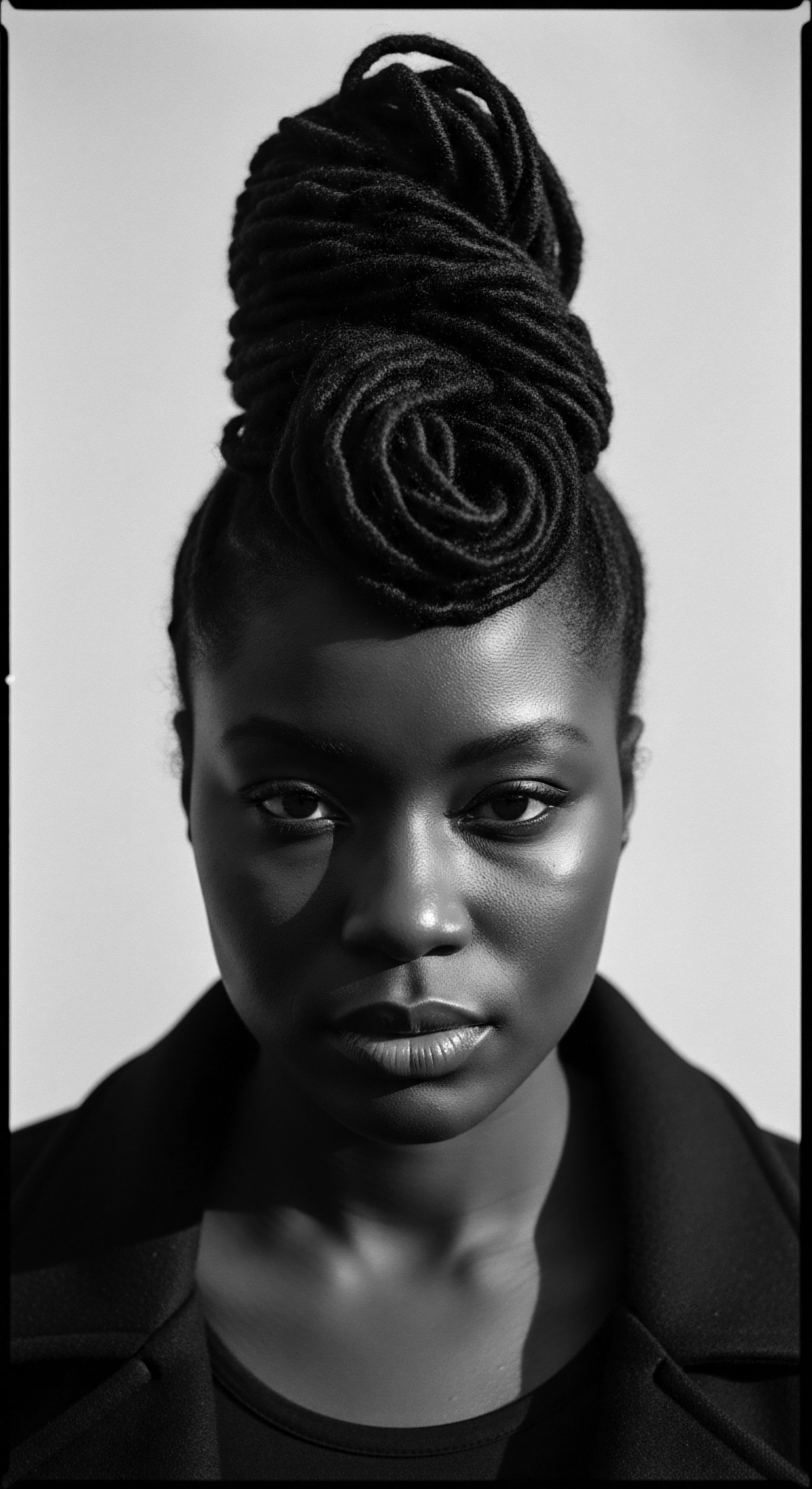
The Science of Scalp Shielding
Recent investigations offer compelling empirical evidence supporting the thermoregulatory hypothesis of scalp hair. A study conducted by Lasisi, Smallcombe, Kenney, et al. published in the Proceedings of the National Academy of Sciences (2023), meticulously examined how different hair textures influence heat gain from solar radiation. Utilizing a Thermal Manikin — a human-shaped model designed to simulate body heat — and a range of human hair wigs, researchers systematically measured heat fluxes to the scalp.
Their findings were unequivocally clear ❉ while all hair types offered a degree of protection, Tightly Curled Hair Provided the Most Effective Defense against Solar Radiation while simultaneously minimizing the need for sweat to offset heat gain (Lasisi et al. 2023). This statistic reveals the exceptional efficiency of highly textured hair in mitigating heat stress.
Rigorous scientific inquiry reveals tightly coiled hair as a superior thermal regulator, confirming ancestral wisdom through modern data.
The Lasisi et al. (2023) research elucidated that tightly curled hair not only significantly reduced solar heat absorption on the scalp but also helped conserve water by lessening the physiological demand for evaporative cooling. In hot, arid climates where water sources were often scarce, minimizing fluid loss was an evolutionary advantage.
This insight deepens our appreciation for textured hair not just as a cultural marker but as a vital biological tool that contributed directly to the survival and flourishing of early human populations. The implication extends beyond mere comfort; it touches upon the very conditions that allowed for the growth of larger, more metabolically demanding brains.

Ancestral Care, Modern Echoes
The understanding of hair’s protective qualities was not confined to scientific laboratories of the distant future; it was embodied in the Ancestral Hair Care Traditions passed down through generations. These practices, though often seen as simple rituals, were sophisticated responses to environmental realities, intuitively aligning with what modern science now validates.
- Protective Styling ❉ Braids, twists, and locs, prevalent across African cultures, secured hair close to the scalp, further enhancing its natural protective barrier and reducing exposure to elements.
- Natural Ingredient Application ❉ The use of oils like Shea Butter, Castor Oil, and plant-based infusions (such as from Aloe Vera) nourished the hair and scalp, maintaining their health and integrity under demanding conditions. These natural emollients would have reinforced the hair’s capacity to shield and retain moisture, crucial for both hair and scalp wellness.
- Head Wraps ❉ Beyond cultural and spiritual significance, the historical use of head wraps across the African diaspora also served a practical purpose, providing an additional layer of sun protection, particularly for those working in fields or navigating harsh climates.
These cultural responses were not merely decorative; they were the practical applications of inherited wisdom, safeguarding the very structures that had evolved to sustain human life. They demonstrate a continuous thread of care that spans from elemental biology to the communal hearths where hair rituals reinforced identity and well-being.
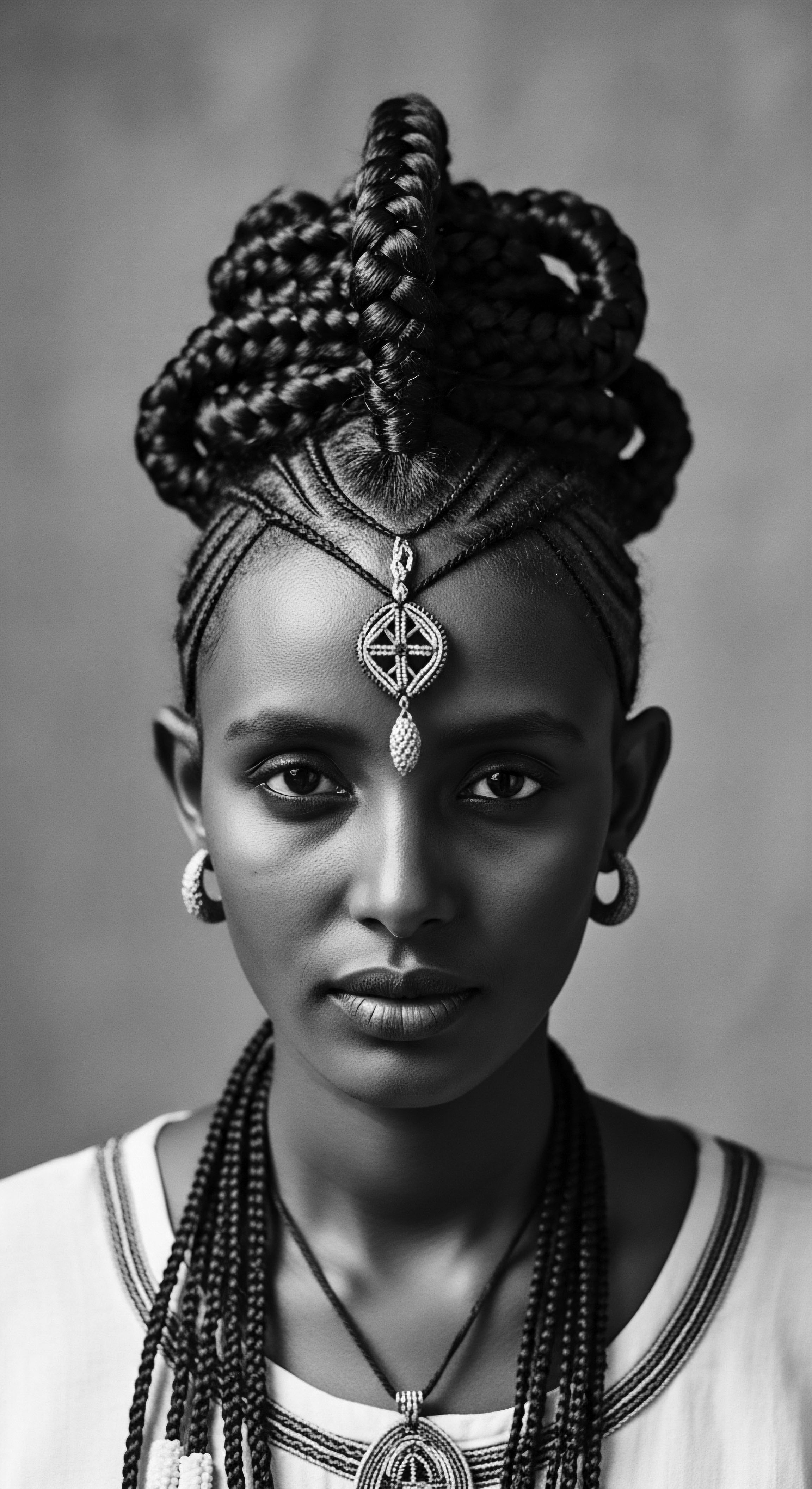
Academic
The elucidation of Human Evolutionary Adaptations, particularly concerning hair morphology, draws upon a rigorous scientific framework, probing the intricate biological and environmental pressures that shaped human form. In academic discourse, this concept designates the heritable traits that developed within human populations in response to selective pressures, enhancing survival and reproductive success in specific ecological niches. For scalp hair, this interpretation is deeply rooted in the biophysical mechanics of thermoregulation and ultraviolet radiation attenuation, especially in the context of hominin evolution in equatorial Africa. The prevailing academic designation posits that the unique configurations of textured hair represent a highly effective passive cooling mechanism, crucial for the thermal stability of the developing brain.
The anatomical and physiological specificities of human hair, particularly the pronounced variability in its morphology across global populations, offer a rich domain for inquiry. Unlike the dense pelage of most mammals, the human body is largely denuded, yet the scalp retains a prominent hair covering. This apparent paradox is resolved by considering the bipedal stance of early hominins, which positioned the crown of the head as the primary recipient of direct, high-intensity solar radiation. The necessity to mitigate this heat load became paramount, especially as brain size underwent significant encephalization, demanding enhanced thermal regulation to prevent hyperthermia and maintain optimal cognitive function.
Human evolutionary adaptations of hair reveal a profound interplay of genetics, environment, and ancestral ingenuity.

Biophysical Mechanisms of Textured Hair’s Protective Role
The distinctive helical structure of tightly coiled hair forms a non-contiguous, porous layer above the scalp. This architecture generates a complex interplay of physical phenomena that collectively contribute to its protective efficacy. The space between the individual hair strands and the scalp surface creates an air gap, functioning as an insulator. This air layer impedes direct conductive heat transfer from the intensely sunlit outer hair surface to the skin.
Simultaneously, the three-dimensional geometry of the coils increases the surface area of the hair itself, promoting convective cooling. As air flows through the voluminous hair, it carries away heat, reducing the thermal burden on the scalp.
Furthermore, the pigment melanin, densely packed within the hair shaft, absorbs and scatters a significant portion of incoming ultraviolet radiation, shielding the delicate epidermal and dermal layers of the scalp from phototoxic damage. The mechanical integrity of the hair shaft itself, though often perceived as fragile in textured hair, provides a physical barrier against abrasive environmental elements. The structural composition, encompassing keratin proteins and associated amino acids, provides an inherent strength, despite certain curl types exhibiting lower tensile strength compared to straight hair (Khumalo, 2005). The elliptical cross-section of tightly coiled hair fibers, coupled with their unique growth patterns within the hair follicle, underpins these distinctive macroscopic properties.
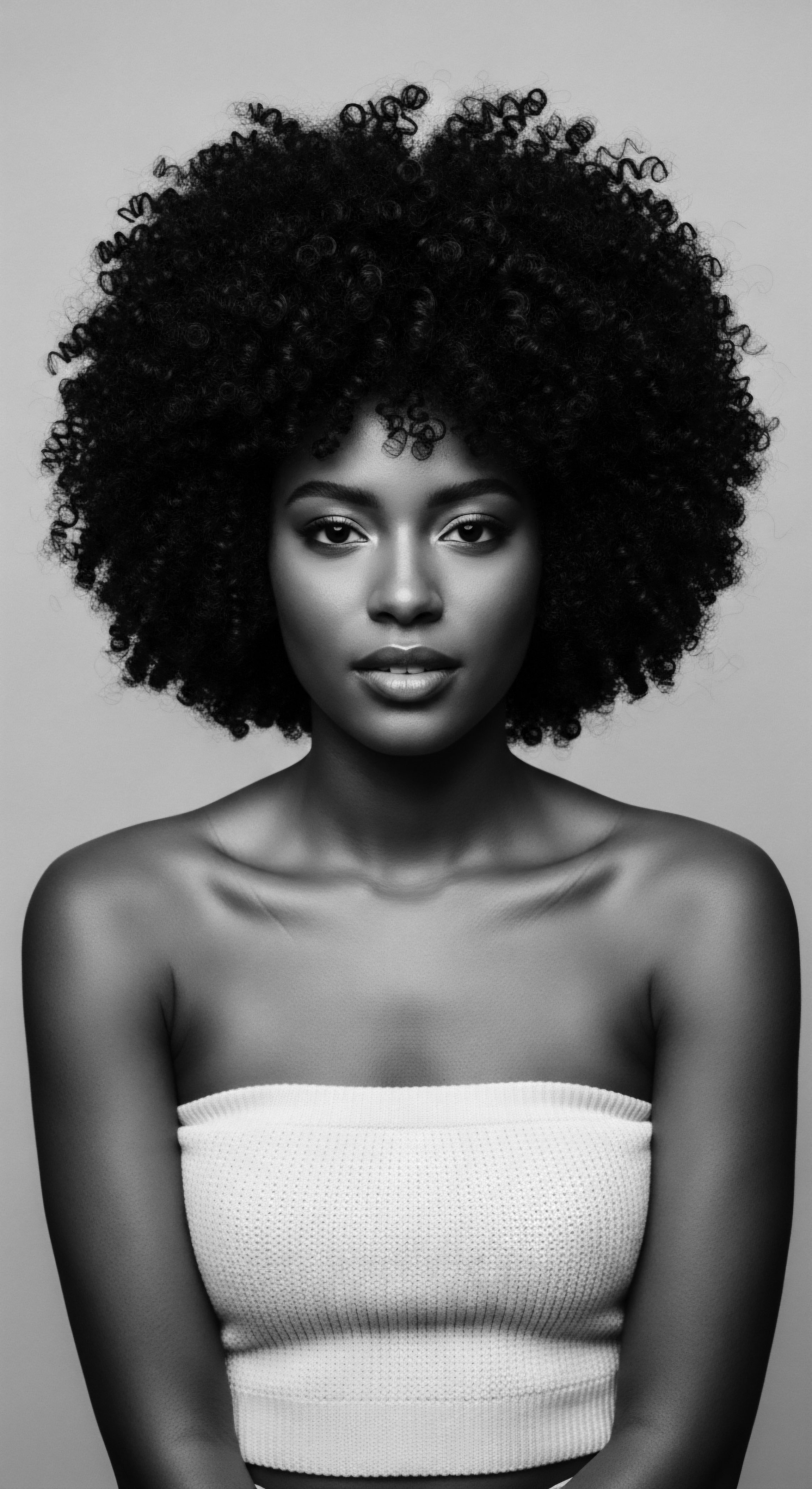
The Lasisi Et Al. (2023) Study ❉ A Case for Thermoregulatory Adaptation
A seminal empirical investigation supporting the thermoregulatory hypothesis is the study conducted by Lasisi, Smallcombe, and Kenney, among others, published in Proceedings of the National Academy of Sciences (2023). This research employed a sophisticated methodology utilizing a Thermal Manikin programmed to simulate human physiological heat output, positioned within a climate-controlled wind tunnel. Wigs of varying human hair morphologies — encompassing straight, moderately curled, and tightly curled textures — were placed on the manikin’s scalp. Direct measurements of convective, radiative, and evaporative heat fluxes to and from the scalp were meticulously recorded under simulated solar radiation.
The findings from this rigorous examination provided compelling quantitative evidence. The researchers observed a significant reduction in solar radiation influx to the scalp across all hair types compared to a bald scalp . Critically, the study demonstrated that tightly coiled hair offered the most pronounced reduction in heat gain from solar radiation . Beyond merely blocking heat, the study also revealed that this hair morphology minimized the necessity for sweat to offset heat gain , implying a crucial water conservation benefit in arid ancestral environments (Lasisi et al.
2023). This empirical validation of heat reduction and water economy for tightly coiled hair provides a robust scientific foundation for its designation as a key evolutionary adaptation.
The implications of these findings extend to the broader understanding of human brain evolution. As early hominins adopted bipedalism, the increased direct solar exposure to the scalp posed a significant thermal challenge to the developing, metabolically active brain. The passive cooling mechanism offered by tightly coiled hair could have alleviated this constraint, allowing for sustained cerebral temperatures within physiological limits conducive to increased brain size and complexity. This specific incident of adaptation underscores the deep connection between fundamental biological structures and their cascading effects on human development and capability.
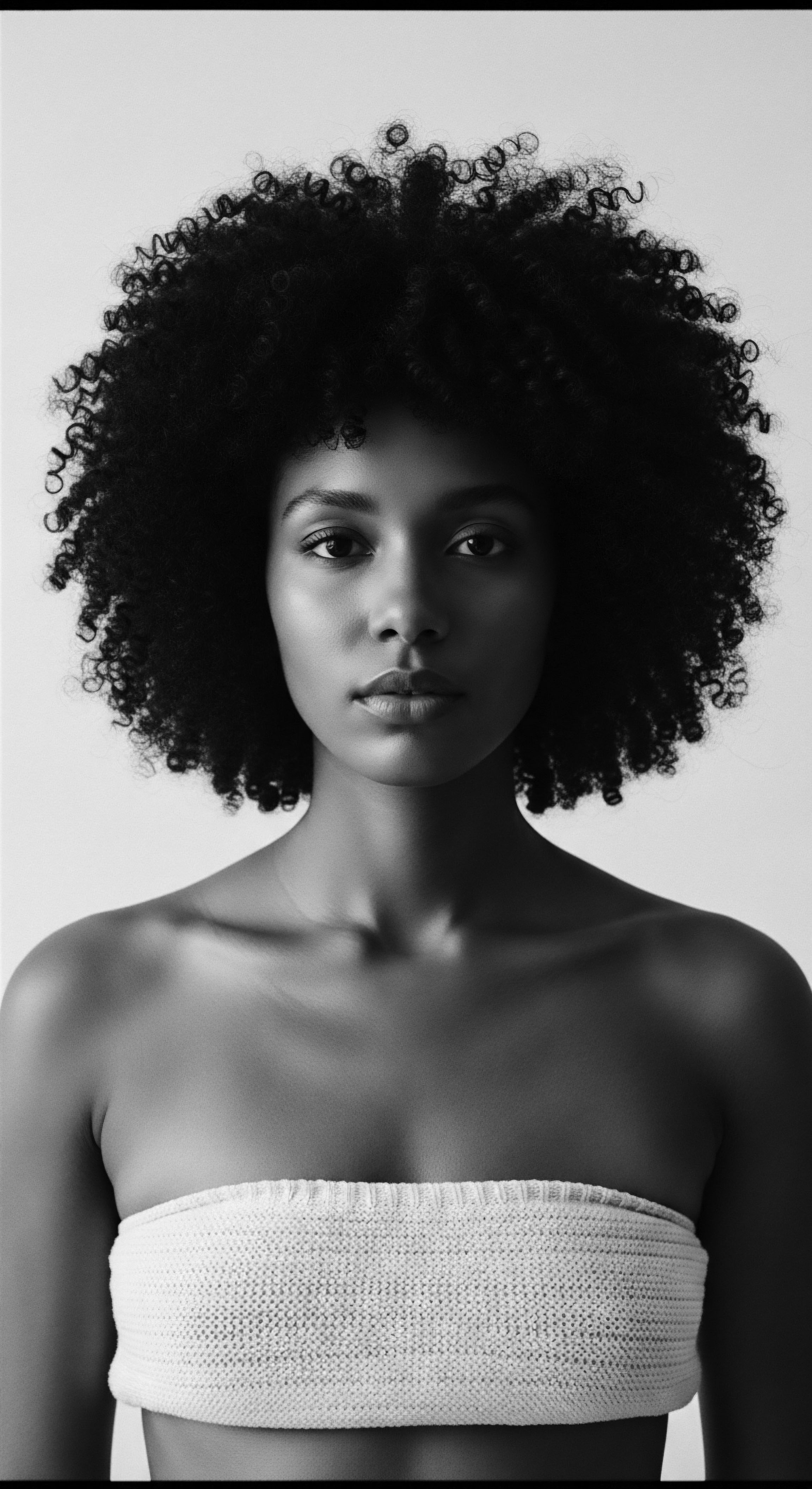
Genetic Underpinnings and Ancestral Practices
The genetic architecture underlying hair morphology is complex, involving multiple genes influencing hair follicle shape, keratin structure, and protein composition. Variations within gene clusters such as the Keratin Associated Protein (KAP) Genes and the influence of proteins like Trichohyalin are known to play a role in determining the final curl pattern. The geographical distribution of certain KAP gene variations, observed predominantly in African populations, provides molecular support for selective pressures acting on hair morphology in ancestral environments (Eaaswarkhanth et al.
2018). This genetic heritage directly links contemporary hair textures to the deep evolutionary past.
The enduring meaning of these adaptations is not confined to biological texts; it lives within the ancestral practices of textured hair care that have been meticulously preserved and passed down through generations. These traditions, spanning continents and centuries, embody an intuitive, embodied scientific understanding.
| Traditional Practice/Ingredient Shea Butter & Natural Oils |
| Ancestral Context Widely used across West Africa for moisturizing and protecting skin and hair in harsh, dry climates. |
| Scientific Link to Adaptation Natural emollients reinforce hair's protective barrier, helping to seal in moisture and prevent desiccation of the scalp, supporting the water conservation aspect of hair's evolutionary function. (Colomas, 2023) |
| Traditional Practice/Ingredient Protective Braiding & Styling |
| Ancestral Context Common across diverse African cultures; styles like cornrows, Bantu knots, and locs reduce tangling and breakage, and manage hair volume. |
| Scientific Link to Adaptation Minimizes exposure of individual strands to environmental stressors like intense sun and wind, reinforcing the hair's natural UV and thermal protective capabilities while preserving hair health. (Afriklens, 2024) |
| Traditional Practice/Ingredient Hair Wrapping/Headwraps |
| Ancestral Context Used for protection, cultural expression, and social signaling across the African diaspora, often in contexts of sun exposure or laborious work. |
| Scientific Link to Adaptation Adds an external layer of defense against solar radiation, complementing the hair's inherent protective qualities and offering additional thermoregulatory benefit, especially for field laborers. (Ari Party Hair, 2025) |
| Traditional Practice/Ingredient Herbal Rinses & Cleansers (e.g. Yucca Root) |
| Ancestral Context Employed by various indigenous tribes, including Native Americans, for cleansing and scalp health, utilizing natural saponins. |
| Scientific Link to Adaptation Maintains scalp hygiene, which is vital for healthy hair growth and the integrity of the hair follicles, allowing the scalp hair to effectively perform its thermoregulatory and protective functions. (22 Ayur, 2023) |
| Traditional Practice/Ingredient These practices stand as living testaments to an ancestral wisdom that intuitively understood and optimized hair's inherent evolutionary capabilities for well-being and endurance. |
The intellectual legacy of these practices is undeniable. They illustrate how communities, without the aid of modern scientific instruments, developed a sophisticated understanding of their environment and the biology of their bodies. The methods employed, whether it involved specific braiding techniques or the selection of particular plant-based remedies, were directly aligned with safeguarding the hair’s natural endowments. This alignment ensured optimal performance of hair’s thermoregulatory and protective functions, simultaneously reinforcing communal bonds and cultural identity.
The interpretation of Human Evolutionary Adaptations for textured hair extends beyond a simple biological description; it frames a profound cultural narrative. It acknowledges that hair, in its complex structure and diverse expressions, is a living archive of human migration, environmental pressures, and the enduring intelligence embedded within ancestral practices. This holistic meaning allows for a richer appreciation of textured hair’s historical significance and its contemporary importance.

Reflection on the Heritage of Human Evolutionary Adaptations
As we draw this narrative to a close, a quiet sense of wonder descends, contemplating the profound journey of Human Evolutionary Adaptations as mirrored in our hair. It is a story not merely of survival, but of flourish, a testament to the ancestral ingenuity woven into every curl, every coil. The fibers of our textured hair, far from being a simple biological happenstance, stand as a living testament to a grand design, honed by the sun and wind of ancient landscapes, echoing the wisdom of generations long past.
The scientific insights we have explored — the thermoregulatory genius of tightly coiled strands, their shielding against the sun’s potent gaze, and their role in preserving precious bodily moisture — are not cold, detached facts. They are affirmations of what ancestral communities understood through observation, through touch, through an intimate connection with the rhythms of their environment. The very act of caring for textured hair, from anointing it with rich, nourishing oils to braiding it into intricate protective styles, transcends mere cosmetic ritual. These are acts of reverence, a continuing dialogue with an inherited legacy, a profound connection to the earth and its enduring wisdom.
Each coil of textured hair whispers a story of adaptation, resilience, and an unbroken line of ancestral wisdom.
The heritage of textured hair, particularly within Black and mixed-race communities, is a vibrant, living archive of this evolutionary journey. It speaks of resilience through eras of oppression, of beauty reaffirmed against imposed standards, and of identity asserted with every unapologetic curl. The practices of our forebears were not just about managing hair; they were about honoring the self, about connecting to the spiritual and communal threads that bind us to a collective past.
In each tender brushstroke of conditioner, in every gentle twist of a protective style, we echo the hands of those who came before us, who instinctively understood the nuanced needs of hair forged in the crucible of adaptation. This understanding brings with it a sense of purpose, a quiet strength that recognizes our hair as a sacred extension of our very being, a symbol of tenacity and beauty. The evolution of textured hair is an ongoing narrative, inviting us to look deeply, to listen closely, and to carry forward the torch of ancestral wisdom, ensuring that the soul of every strand continues its unbound helix through time.
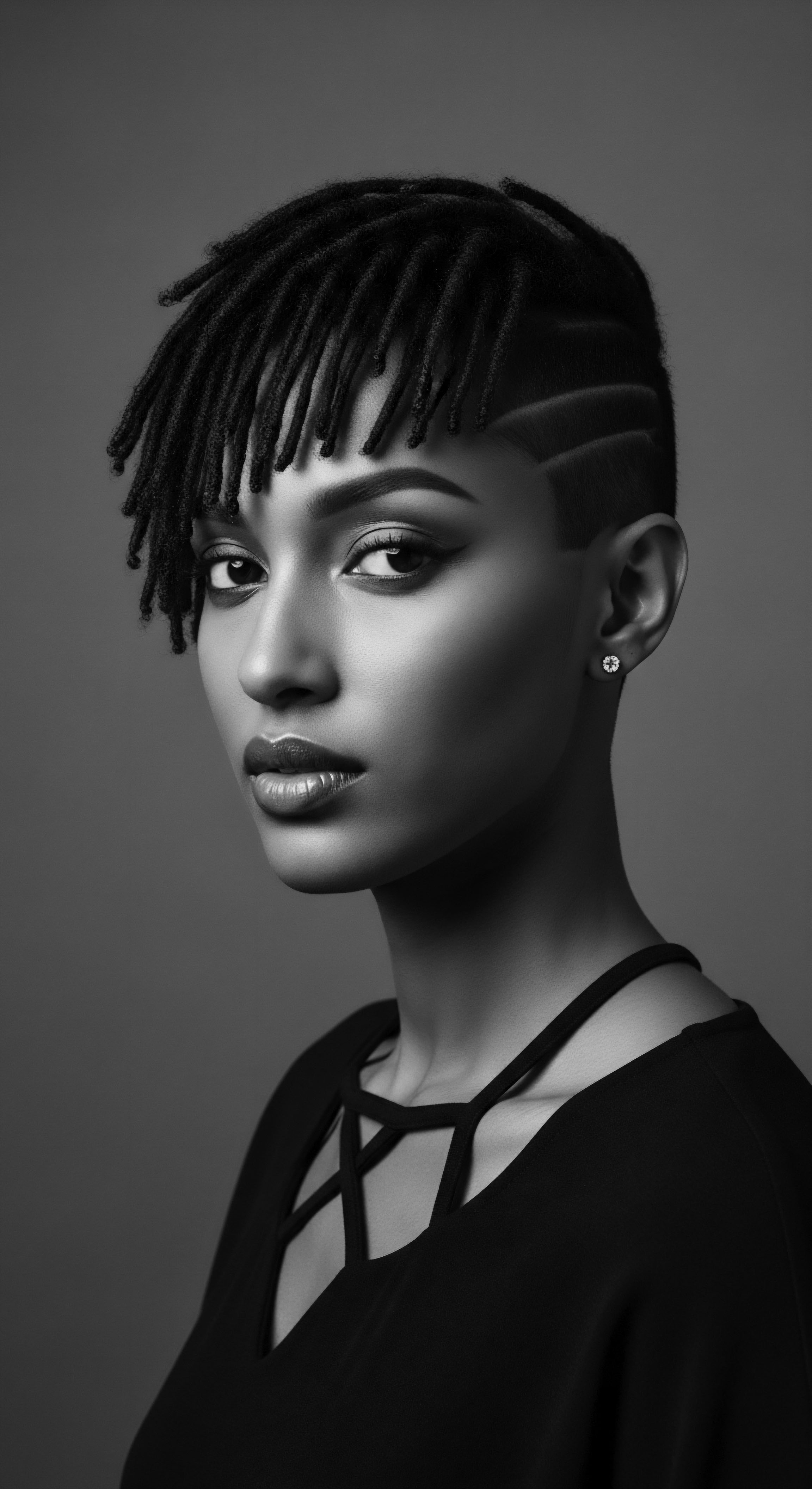
References
- 22 Ayur. (2023). The Ancient Natural Ways of Hair Care Across Continents.
- Afriklens. (2024). African Hairstyles ❉ Cultural Significance and Legacy.
- Ari Party Hair. (2025). The History and Symbolism of Hair Wrapping Across the African Diaspora.
- Colomas, J. (2023). Unlock Ancient Hair Care Secrets ❉ Discover Global Rituals for Lustrous Locks.
- DiStefano Hair Restoration Center. (2025). The Function of Human Hair.
- Eaaswarkhanth, M. et al. (2018). Why Do Some People Have Curly Hair and Others Straight? JSTOR Daily.
- Khumalo, N. P. (2005). African hair morphology ❉ Macrostructure to ultrastructure. ResearchGate.
- Lasisi, T. Smallcombe, J. W. & Kenney, W. L. (2023). Human scalp hair as a thermoregulatory adaptation. Proceedings of the National Academy of Sciences, 120(24), e2301760120.
- SciTechDaily. (2023). Evolutionary Role of Curly Hair ❉ Keeping Early Humans Cool and Hydrated.
- Substack. (2025). Ancestral Hair Rituals to Nourish Your Hair and Soul.
